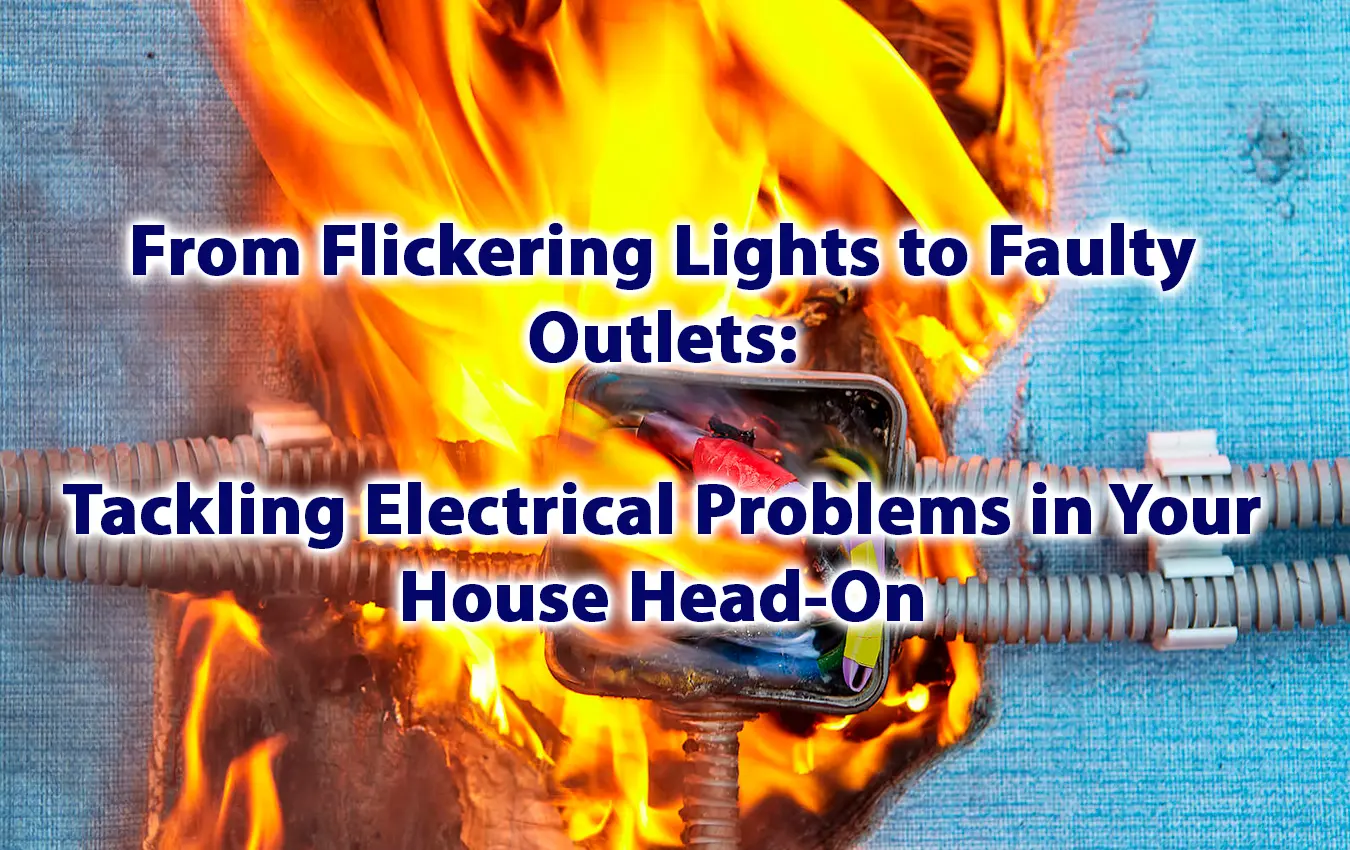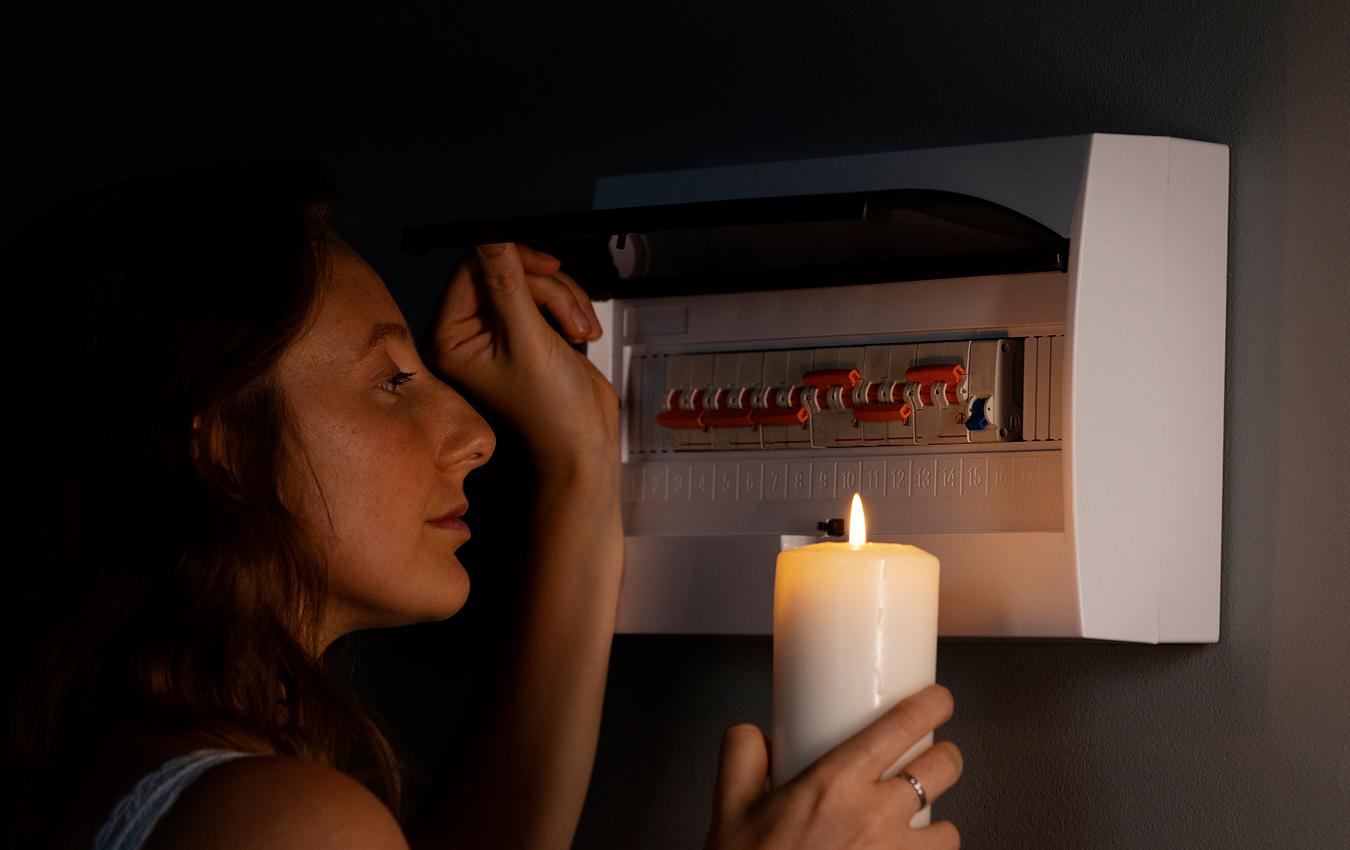Only some things can disrupt the comfort and convenience of your home, like electrical problems in house. Whether it’s a flickering light that creates an eerie ambiance or a faulty outlet that leaves you unable to charge your devices, these issues not only cause frustration but can also signal serious underlying problems. Ignoring them isn’t just an inconvenience; it’s a safety risk.
Electrical problems in house can lead to potentially hazardous situations like electric shocks or fires, making it crucial to address them promptly. Taking immediate action can help prevent further damage, save you money in the long run, and, most importantly, keep your home safe.
In this article, we will delve into some of the most common electrical problems homeowners encounter. From the flickering lights that make your home feel like a haunted house, to the constantly tripping circuit breakers that leave you in the dark, to the faulty outlets that render your appliances useless, and the overloaded circuits that threaten to take down your entire electrical system. Keep reading!
Understanding the Basics: Electrical Systems in Your House
At its core, an electrical system is a network of circuits that deliver power to various parts of your house. It all starts at the electrical service panel or breaker box, which is connected to your local utility company’s power line. The panel divides the electricity into multiple circuits, each protected by a circuit breaker. These circuits then distribute electricity throughout your home, powering everything from your refrigerator to your bedside lamp.
Several vital components in this system are prone to issues. The service panel, for instance, can become outdated or damaged, leading to severe problems like overloaded circuits. Outlets and switches, being the points of interaction between you and your electrical system, are also common sites of trouble, often experiencing wear and tear from regular use. Wiring, though hidden behind your walls, can deteriorate over time and pose significant hazards if not properly maintained.
This brings us to the importance of regular maintenance and inspections. Just like your car or your health, preventative care is crucial for your home’s electrical system. Regular inspections can identify potential problems before they cause significant damage or become safety hazards. They can reveal issues like frayed wiring, outdated equipment, or improper installations that might not be noticeable until they cause a major problem.
Identifying Electrical Problems
Understanding the common electrical problems in house can be the first step towards resolving them or seeking professional help. Here are a few issues you might encounter:
Flickering Lights: Causes and Troubleshooting Steps
Flickering lights can be a nuisance, and while they may seem harmless, they could indicate underlying electrical problems. The most common cause is a bulb not screwed in properly, which can be solved simply by tightening it. If the problem persists, try replacing the bulb, as it may be faulty. If flickering continues after replacing the bulb, it could be due to loose wiring or an issue with the light fixture. In this case, it’s best to consult a professional electrician.
Constantly Tripping Circuit Breakers: Causes and Solutions
Circuit breakers are designed to protect your home by tripping when they detect an overload or short circuit. However, if a breaker is constantly tripping, it can indicate a problem. Overloading the circuit with too many high-wattage appliances is a common cause. To resolve this, try unplugging some appliances or spreading them out across different circuits. If the breaker keeps tripping, it could be due to a short circuit or a faulty breaker, both of which require a professional’s attention.
Faulty Outlets: How to Identify and Resolve Outlet Issues
Outlets can wear out over time, causing issues like plugs falling out easily or the outlet not working at all. A simple test to identify a faulty outlet is to plug in a device that you know works into the suspect outlet. If the device doesn’t power up, the outlet might be the problem. Replacing an outlet is relatively simple, but if you’re uncomfortable doing it yourself, hire a professional.
Overloaded Circuits: Signs, Symptoms, and Prevention
Overloaded circuits occur when more electricity is drawn than the circuit can handle. Signs of an overloaded circuit include dimming or flickering lights, constant tripping breakers, and outlets that feel warm to the touch. To prevent overloads, avoid using too many high-wattage appliances on the same circuit, and consider having additional circuits installed if necessary. If you suspect your circuits are overloaded despite your best efforts, it’s time to call in a professional. Remember, while it’s helpful to understand these issues, electrical work can be dangerous. Always prioritize safety, and don’t hesitate to consult with a professional when needed.
Need help with your home’s electrical wiring or equipment? Premier Electrical Services is here to assist. We specialize in fixing home wiring, repairing sockets and switches, and connecting household appliances. Fast and efficient service is our promise. Call us at 954-900-1696 today, and let us solve your electrical issues!
DIY Solutions for Minor Electrical Problems
While some electrical issues require professional attention, there are minor problems that you can tackle on your own. Before attempting any DIY electrical work, it’s crucial to follow these safety precautions:
- Turn off the power: Always switch off the circuit breaker or fuse that controls the electrical system you’ll be working on.
- Use insulated tools: Invest in tools with rubber or plastic grips to protect yourself from electric shock.
- Wear protective gear: Safety glasses and gloves can protect you from sparks and sharp objects.
- Don’t touch live wires: Never touch wires until you’ve confirmed they’re not live.
Now, let’s look at how you can address some common problems:
Replacing a Faulty Light Switch
- Turn off the power: Locate your home’s service panel and turn off the power to the switch you’ll be replacing.
- Remove the switch cover: Unscrew and remove the switch cover plate.
- Test wires for electricity: Use a voltage tester to make sure the wires aren’t live.
- Disconnect the old switch: Unscrew the switch from the box and disconnect the wires.
- Connect the new switch: Attach the wires to the new switch following the manufacturer’s instructions. Then screw the switch back into the box.
- Replace the cover: Screw the cover plate back on, and restore power to test the new switch.
Fixing Loose or Non-Functioning Outlets
- Turn off the power: As always, start by turning off the power at the service panel.
- Unscrew the outlet: Remove the outlet cover and unscrew the outlet from the box.
- Check the wiring: Look for loose connections or damaged wires.
- Tighten connections or replace the outlet: If the wires are loose, tighten them. If the outlet is damaged, replace it with a new one following the manufacturer’s instructions.
- Reinstall the outlet and cover: Screw the outlet and cover back into place, then restore power and test the outlet.
Addressing Common Wiring Problems
Dealing with wiring issues can be complex and dangerous. For minor problems like a loose wire, you can simply tighten the connection. But for more severe issues like frayed or damaged wires, it’s best to call a professional. Only attempt to repair wiring if you’re confident and comfortable doing so.
Remember, while DIY solutions can be cost-effective and satisfying, they should only be attempted if you feel confident and safe. When in doubt, always hire a professional to ensure your home’s electrical system is functioning correctly and safely.
When to Call a Professional Electrician
While some minor electrical issues can be safely resolved at home, there are situations where the expertise of a professional electrician is necessary. Knowing when to call in the professionals can save you time, money and, most importantly, ensure your safety.
Understanding When a Problem Requires Professional Intervention
Sure signs indicate the need for professional intervention. These include frequently tripping circuit breakers, outlets or switches that are hot to the touch, lights that dim or flicker, and any visible damage to wiring. If you experience any of these issues, it’s best to call a professional. Similarly, if you’re considering major home improvements or additions that require new wiring, a professional electrician should handle these tasks.
Importance of Hiring a Licensed Electrician
Always hire a licensed electrician to ensure the work is done correctly and safely. Licensed electricians have undergone rigorous training and are up-to-date with the latest electrical codes and standards. They also carry insurance, which protects you from liability in case of an accident.
How to Find the Right Electrician for Your Specific Needs
Finding the right electrician requires some research. Start by asking for recommendations from friends or neighbors. Once you have a few names, check their online reviews and ratings. Make sure they are licensed and insured, and don’t hesitate to ask for references.
Consider their specialty and experience. If you’re dealing with a complex issue like outdated wiring, you’ll want an electrician experienced in handling such problems. For new installations, look for electricians who specialize in residential projects.
Finally, ask for quotes from multiple electricians to ensure you’re getting a fair price. Remember, however, that the lowest quote isn’t always the best. Consider the electrician’s reputation, experience, and customer service along with their quote.
Preventing Future Electrical Problems
Prevention is always better than cure, especially regarding electrical issues. Not only can preventative measures save you the stress and cost of repairs, but they can also help ensure the safety of your home. Here are some steps you can take to prevent future electrical problems in house:
Importance of Regular Maintenance
Regular maintenance plays a crucial role in preventing electrical problems. This includes checking your outlets for signs of wear or damage, testing your circuit breakers, and ensuring your light fixtures are clean and dust-free. If you notice any issues during these checks, address them promptly to prevent them from escalating.
Upgrading Outdated Electrical Systems
Outdated electrical systems can be a major cause of electrical problems. If your home is older and hasn’t had an electrical upgrade in several decades, consider one. An upgrade can include replacing the service panel, rewiring the house, and adding more outlets to prevent overloading circuits. While this can be a significant investment, it can save you from frequent electrical issues and potential hazards.
Implementing Safety Measures to Reduce the Risk of Electrical Issues
Implementing safety measures can go a long way in preventing electrical problems. These measures include not overloading outlets, using surge protectors for expensive electronics, and keeping water away from electrical appliances and outlets. Also, remember to replace any damaged cords immediately and avoid running them under rugs or heavy furniture.
Educate your family members, especially children, about electrical safety. Make sure they understand the dangers associated with electricity and know what precautions to take.
Conclusion
Navigating the world of home electrical systems can be a daunting task, but understanding the basics can go a long way in maintaining a safe and functional environment. We’ve discussed how to identify common electrical problems in house, some DIY solutions for minor issues, when to call a professional electrician, and preventative measures to avoid future problems. Are you in need of professional electrical services? Whether you’re setting up a home entertainment system, installing a backup power system, or need help with everyday electrical issues, Premier Electrical Services is ready to help! Contact us today at 954-900-1696
Check out the latest news:
- Commercial Energy Audit: Spotting the Sources of Energy Waste
- Protect Your Fort Lauderdale Home with Whole-House Surge Protection
- Power Outages in Fort Lauderdale: How to Protect Your Home
- Preparing for a Home Rewiring Project: A Checklist for Homeowners
- 5 Critical Signs You Need a Whole-House Surge Protector






